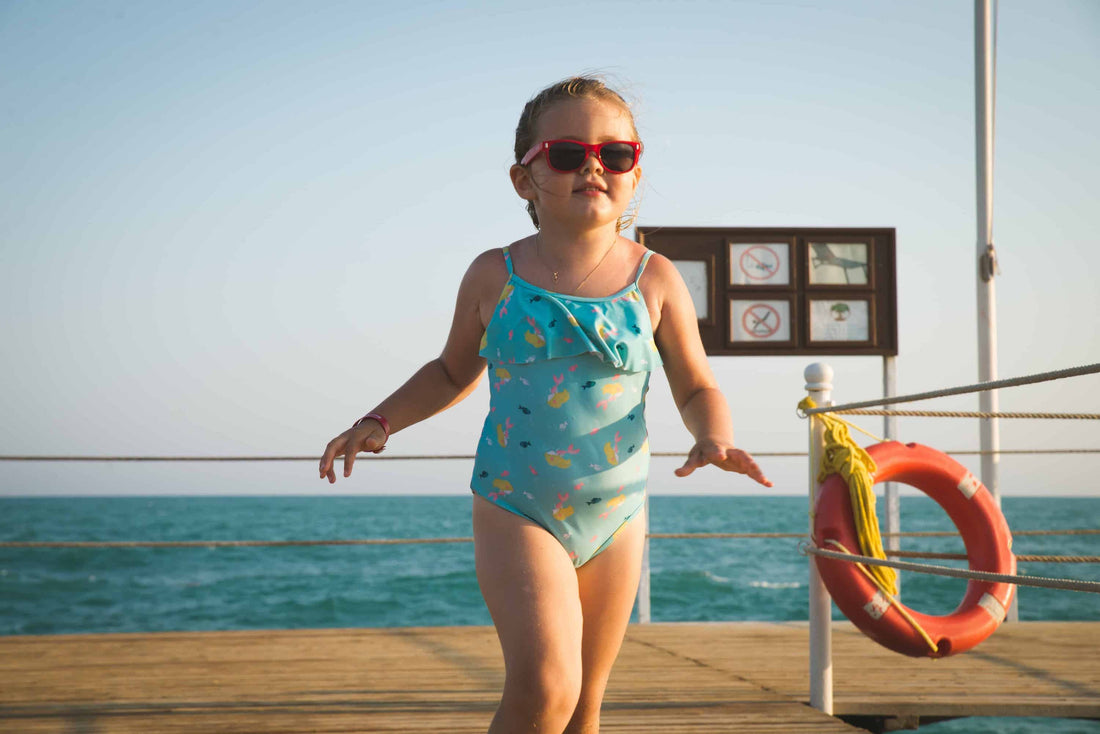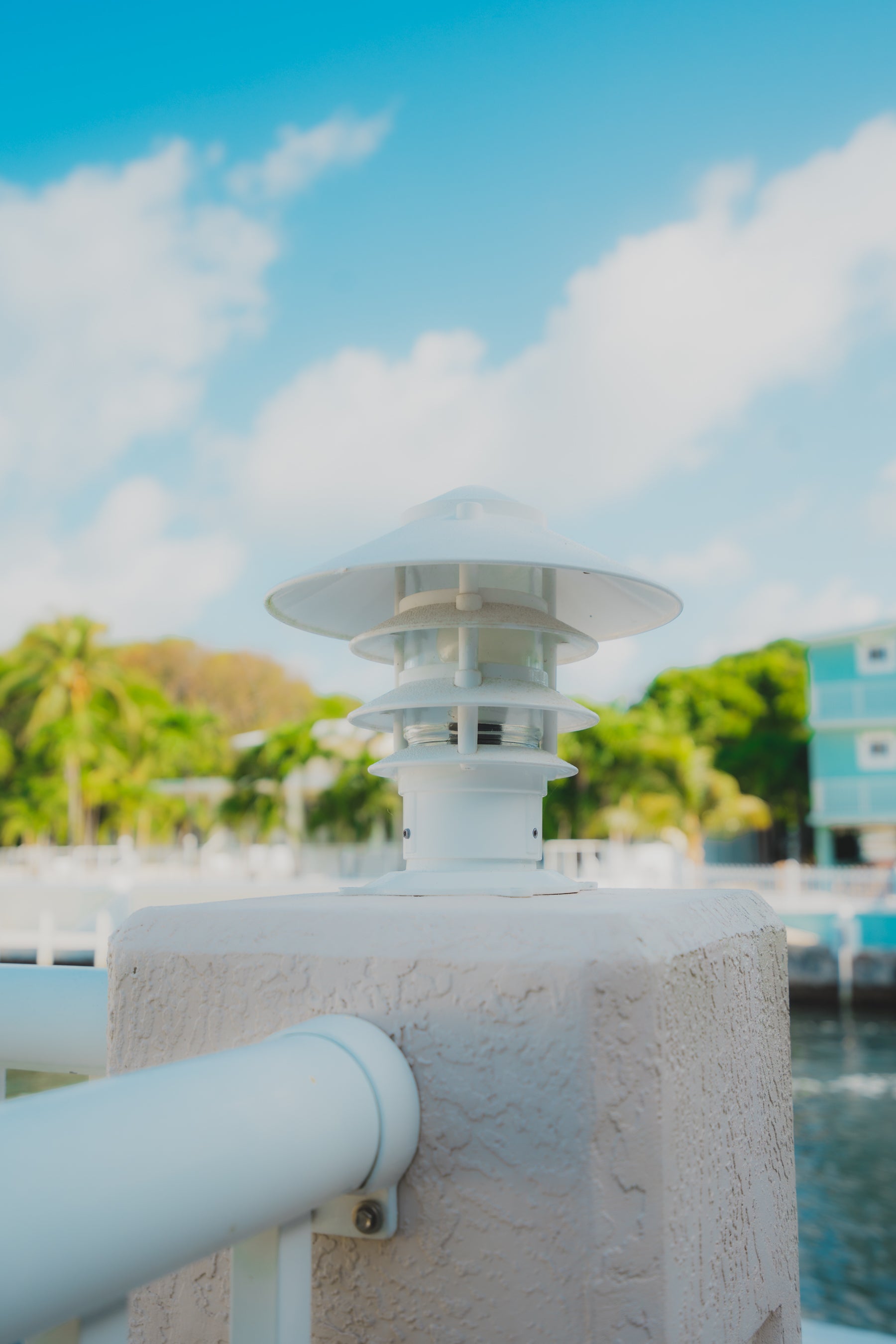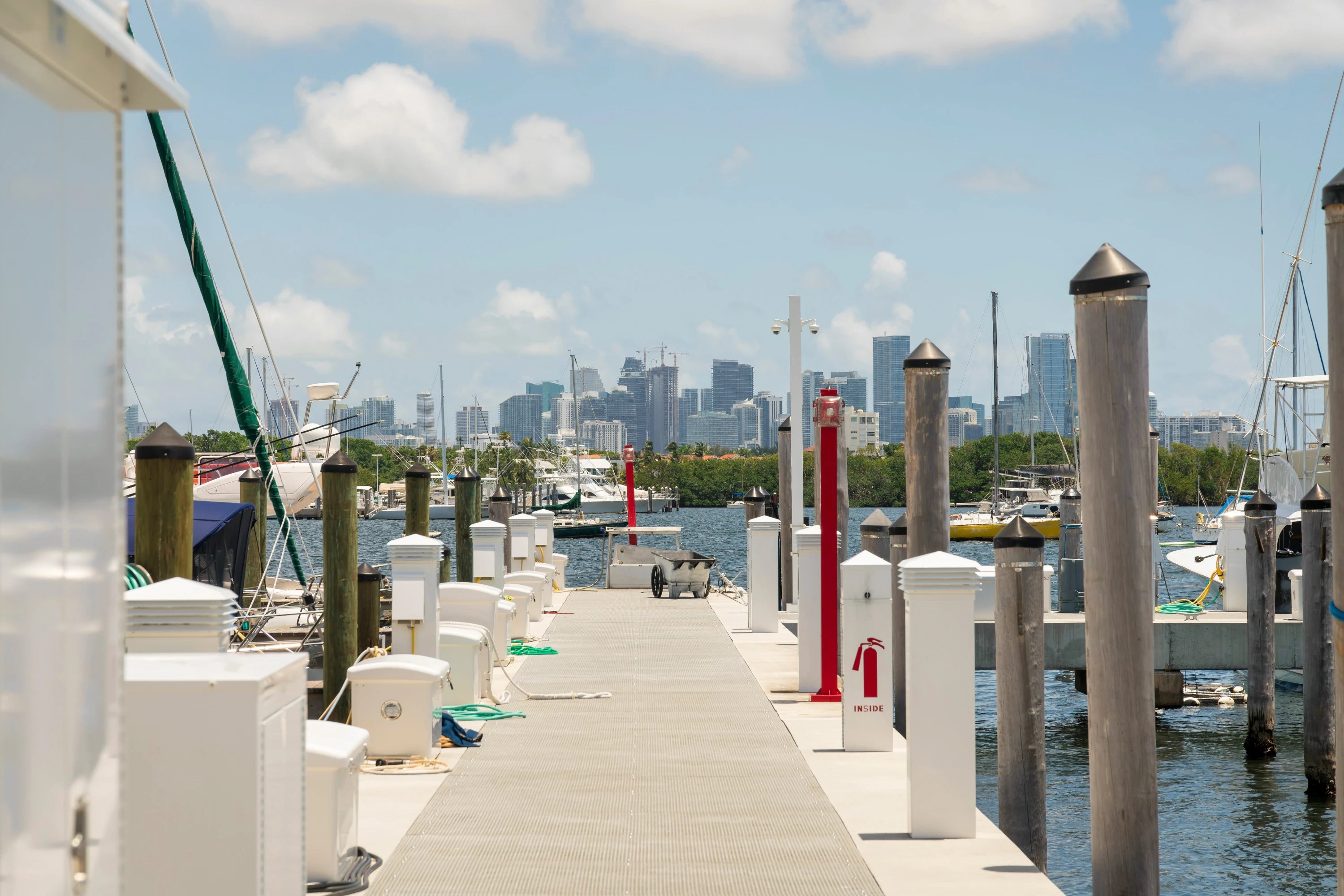
Dock Safety for Children and Pets
Share
With numerous hazards present near the water, proactive dock safety for children and pets is crucial for keeping your loved ones safe around the water. This blog post will delve into essential strategies for maintaining a secure environment around docks to protect your little ones and furry friends.
Establishing effective rules and safety procedures tailored specifically for small children and pets can significantly prevent mishaps. We will also explore safety equipment you can upgrade or install to ensure everyone remains protected during the docking process.
Common Risks of Unsupervised Dock Access
Before you let young ones or furry companions loose near a dock, understand the risks. Docks can have uneven surfaces and sharp objects that fall and can cause injury. And clearly - the water is not solely for splashing about but is a potential drowning hazard, too.
Some of the risks include:
- Falling into the water because of slippery or unstable surfaces
- Injury from tripping over loose cables or equipment
- Drowning due to poor swimming skills or lack of life jackets
- Pets getting tangled in ropes or other hazards around the dock area
Do not let your children or pets go unsupervised when they're near the docks. It sounds like common sense, but it's easy to get distracted when loading or unloading your boat, tending to guests, or fielding other distractions.
Additionally, teach kids the basic safety rules for docks, such as staying away from the edges, walking carefully on any wet (or potentially wet) surfaces, and wearing a life jacket.
Does your dog know how to swim? Even if Fido does have the know-how, it's best to keep them in a doggy life vest at all times and keep a close eye.
Upgrade Your Dock's Safety Features & Install Essential Safety Equipment
Don't stop at just understanding the risks - take action to prevent them.
Upgrading your dock's safety features can go a long way in protecting your loved ones. Consider adding non-slip surfaces, installing good lighting, and securing loose cables and equipment.
Here are some essential items to help make your dock safer and any boating experience memorable and fun for everyone:
- Proper lighting: Brighten up your dock with adequate lighting to prevent slips, trips, and falls. Check out these dock lights for inspiration.
- Cables & bumpers: Secure your boat with strong cables and high-quality bumpers/fenders.
- Stairs & ladders: Make it easy to get in and out of the water with durable stairs or dock ladders. Non-slip surfaces are a must for added safety.
- Rails & handrails: Handrails provide extra support for navigating slippery surfaces - perfect for young children (and elderly guests).
- Grip-enhancing surfaces: Prevent slips and falls with non-slip materials like mats, specialized paint, or non-slip decking material. Safety first, folks.
- Pet-friendly amenities: Add ramps or steps designed specifically for pets to make it easier for them to enjoy the water. And don't forget that ramps can be slippery, too! Check out our guide on making your ramp safe in a marine or wet environment.
- Secure any loose items: Things like seating and other dock accessories are best stowed away when not being used. This ensures no tripping hazards or displacement from rough weather.
- Install barriers or gates: Put in a gate anywhere that makes sense to keep children and pets contained and protected from stairs or access to the water.
- Create a safety kit: Include life jackets, first aid kits, flares, life rings, a fire extinguisher, a horn, waterproof flashlights, and standard ropes and tow lines. You never know when you will need them - the nature of accidents and emergencies is that they are unpredictable.
- Install a VHF radio: This is a critical safety element for communicating with other boats and marina operators. Make sure you know how to use it.
And we cannot stress this enough: always have Coast Guard-approved life jackets available for both children and pets at the waterfront area. Make sure to have a variety of sizes so everyone has a properly fitting flotation device in case of an emergency.
Establish Dock Safety Rules
Set clear guidelines and safety procedures for your boat dock. Encourage all individuals to observe a cautious and measured approach when on the dock to reduce the potential for mishaps and ensure everyone is conscious of their obligations.
Slow & Steady: Walk Only
Encourage everyone to walk slowly and carefully while on the dock. Running or horseplay can lead to slips, falls, or even someone falling into the water.
Conduct Regular Maintenance for Your Dock
Regularly inspect your dock for any signs of wear or damage, such as loose boards or railings. Address these issues promptly to keep the area safe for use.
Additionally, be careful of power sources. Water and electricity do not mix well. Install bonding jumpers to keep your dock grounded if there is an electrical surge.
For more information on maintaining docks, take a look at our tips.
No Swimming Near the Dock
Designate a separate swimming area away from boats and docking equipment to prevent entanglement in ropes or other hazards.
Keep Safety Gear on Hand
Ensure proper-fitting life jackets are readily available for both children and pets when they're near water. There are many pet-specific life vests available - do your research on the different brands, and make sure they fit securely so your pet doesn't slip out of one in a panic from falling into the deep water below.
Also - make sure all safety equipment is always in good working order. They'll be of no use to you if they don't work! Check expiration dates, excessive wear, and if anything is loose or needs repair.
Be Prepared: Create an Emergency Plan
In case of an accident involving a child or pet falling into the water, have an emergency response plan ready, so everyone knows what steps must be taken immediately. Review it regularly so people know exactly what to do; adrenaline can take over in emergencies and make people forget about their obligations.
Make sure to establish these rules within your family or group dynamic and post them visibly around your boat dock area as a reminder for all users. This will help ensure that everyone remains aware of the importance of dock safety and adheres to the guidelines you've set.
And if people forget - remind them!
Consider Insurance
While we can't advise on specific policies, as this will be based on your particular area, it's not a bad idea to look into what your insurance carrier might provide for accidents and property damage. Even a minor accident can be costly.
Effective Ways to Monitor Activity on Your Dock
Keeping a watchful eye on the dock at all times is crucial to ensuring the safety of children and pets while they use it. By monitoring activity, you can quickly intervene if any unsafe situations arise or prevent accidents from happening in the first place.
Take these steps to help ensure everyone's safety while enjoying time spent by the water:
- Designate a responsible adult. Assign an adult whose sole responsibility is supervising children and pets while others focus on docking tasks. This person should be familiar with water safety rules, know how to respond in emergencies, and be someone your pets and children respect and trust.
- Maintain clear lines of sight. Ensure that there are no obstructions blocking your view of the entire dock area so you can easily spot any potential hazards or incidents that may require immediate attention. You might need to trim overgrown vegetation or reposition furniture for better visibility.
- Incorporate technology. Consider installing security cameras around your dock as an additional layer of protection. Installing security cameras with motion detection alerts can enable remote monitoring and provide notification of activity in specific areas.
- Create a buddy system. Kids (and adults, for that matter) should always have someone else with them while they're near or on the dock - especially during swimming sessions or other water-based activities.
Know How to Dock Properly
Docking can be tricky, even for experienced skippers. But with a few tips, you can dock safely every time, reduce the risk of damage, and ensure everyone on the boat or in the dock area is safe.
Assign clear roles so someone is always watching your child, baby, or pet while the other docks.
- Approach at a safe speed: Always approach the dock slowly, maintaining control over your boat's movement. This gives you more time to react if something goes wrong during docking. Going against the current will also naturally reduce your speed.
- Use proper equipment: Equip your boat with adequate marine equipment that can help during docking maneuvers.
- Practice good communication: Make sure everyone on board and the dock knows their role when it comes to docking, especially if there are children or pets present who need supervision. Communicate clearly with hand signals or radios if necessary.
- Be aware of your surroundings. Be vigilant. Moving water means things are constantly moving around you, like other boats.
- Designate one sober adult as the child and pet supervisor. This person should not be involved in any other aspect of maneuvering into port but instead, focus solely on keeping an eye out for potential hazards affecting kids or animals near the water's edge.
- Keep arms and legs inside the boat. All passengers should limit movements and keep their extremities protected and within the boat.
Educate Your Kids About Dock Safety
While very young children struggle with impulse control, many kids can understand basic rules. It would not be considered premature to discuss water and dock safety with youngsters to help them understand why paying attention to the rules is essential.
A few topics that you can discuss with kids as young as preschool age include:
- A "no-go" zone around the dock area where children are not allowed without adult supervision
- Wearing a life jacket while on or near the water, even if they know how to swim (and you can point out that your family pet also needs to wear one, if appropriate for your situation)
- Potential hazards in and around marinas, including slippery surfaces, moving boats, cables, and propellers
The US Coast Guard also offers a boating safety course you could take as a family and discuss afterward to reinforce what everyone has learned.
Finally, get your kids started on all aspects of boat and dock safety from a young age, even if you are still monitoring them for years to come. Educate them on life jacket safety, swimming skills, and how to call for help.
While they may be too young to be hands-on in the docking process, the adult assigned to caring for them can explain the docking process to them while it happens and ask them questions if they know what happens next. This allows your children to understand what is happening and grow up learning best practices.
Expect the Unexpected
Children and pets are unpredictable. They often do not have the emotional or physical maturity to "roll with it" as adults do. Ensuring you have blankets, water, snacks, and dry clothes to keep little ones and furry companions comfortable will go a long way when facing any unexpected boating challenges with weather, accommodation, or anything else. You might consider packing overnight bags just in case the trip goes longer than planned, along with any medications or eyewear needs.
Need Help Safety-Proofing Your Dock? Contact Us!
Ensure your dock is safe for everyone, including children and pets, by upgrading and installing safety equipment for an enjoyable, family-safe boating experience.
The team at Haven Dock & Marine is exceptionally knowledgeable about all things boating and docking and can help you determine what you need for dock safety. Contact us today to learn about our products and shop for all the best marina brands!



